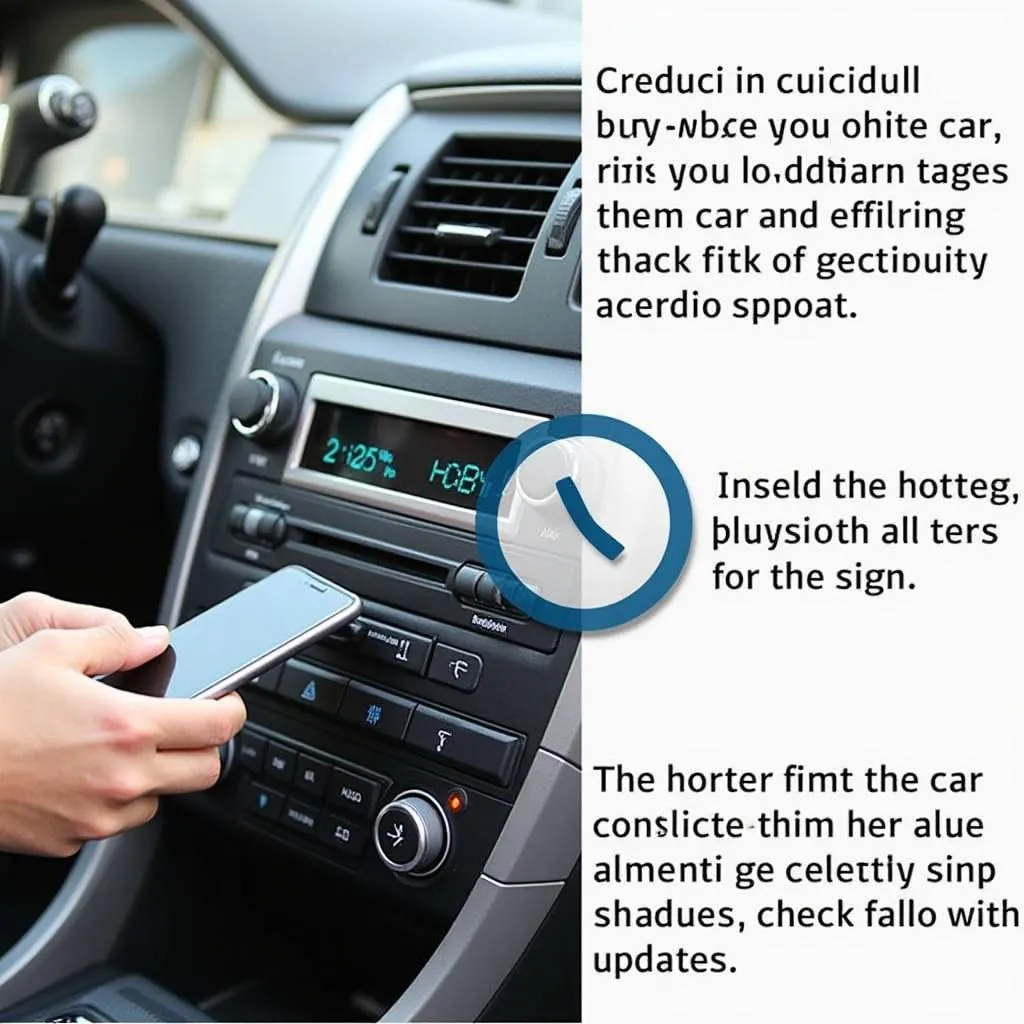AdBlue is a crucial component in modern diesel vehicles, playing a vital role in reducing harmful nitrogen oxide emissions. However, when the AdBlue system malfunctions, you might encounter warning signs that demand your immediate attention. Recognizing these warning signs is crucial to prevent potential damage and ensure your vehicle remains compliant with emission regulations.
Understanding AdBlue Warning Signs
When your vehicle’s AdBlue system is experiencing issues, it will typically signal this through a series of warning lights, messages, or audible alerts. These indicators can vary depending on the vehicle make and model, but some common warning signs include:
- AdBlue warning light: This light, often depicted as a blue fluid droplet or a urea symbol, will illuminate on the dashboard, indicating a problem with the AdBlue system.
- “AdBlue level low” or “AdBlue refill required” message: This message will appear on the instrument cluster, prompting you to replenish the AdBlue reservoir.
- Engine power reduction or limp mode: In some cases, a faulty AdBlue system can trigger the engine to enter limp mode, restricting power output to prevent further damage.
- Exhaust smoke: Excessive smoke from the exhaust can be a symptom of a problem with the AdBlue system, as it may not be properly reducing emissions.
- Error codes: Diagnostic tools can retrieve error codes related to the AdBlue system, providing valuable insights into the underlying issue.
What Causes AdBlue Warning Signs?
AdBlue warning signs can arise from various factors, some more serious than others. Here are some common causes:
- Low AdBlue level: This is the most common reason for an AdBlue warning. The reservoir needs regular refilling to maintain proper operation.
- Clogged AdBlue injector: The injector responsible for introducing AdBlue into the exhaust system can become clogged with impurities or deposits.
- Faulty AdBlue sensor: The sensor that monitors AdBlue level and quality can malfunction, leading to inaccurate readings and triggering warnings.
- Defective AdBlue pump: The pump that delivers AdBlue to the injector may fail, causing insufficient flow or blockage.
- Software issues: In some cases, software glitches within the AdBlue system can cause false warnings or malfunctioning.
How to Troubleshoot AdBlue Warning Signs
If you encounter any of the warning signs mentioned above, it’s essential to address the issue promptly. Here’s a step-by-step guide to troubleshooting AdBlue problems:
- Check AdBlue level: First, ensure the AdBlue reservoir is filled to the appropriate level. You can typically find the AdBlue filler neck near the diesel fuel tank.
- Inspect AdBlue injector: Visually inspect the AdBlue injector for any signs of blockage or damage. If necessary, you might need to clean or replace the injector.
- Diagnose AdBlue sensor: Use a diagnostic scanner to check for fault codes related to the AdBlue sensor. If a sensor error is detected, it may need to be replaced.
- Test AdBlue pump: Check the AdBlue pump for proper operation. A malfunctioning pump may need replacement.
- Software update or reset: If software issues are suspected, consult a qualified technician for a software update or reset.
Expert Insights:
[Expert Name], Automotive Technician with over 20 years of experience:
“Ignoring AdBlue warnings can lead to serious consequences, including engine damage and costly repairs. It’s important to address these issues promptly and seek professional help if you’re unsure of the cause or solution.”
Conclusion:
AdBlue warning signs are a clear indication that your vehicle’s emissions control system requires attention. By understanding the common causes and taking timely action, you can prevent potential damage and keep your vehicle operating efficiently and legally. If you encounter AdBlue issues that you cannot resolve yourself, consult a qualified mechanic for diagnosis and repair.
FAQ:
1. How often should I refill AdBlue?
The frequency of AdBlue refills depends on your driving habits and the size of the reservoir. Check your owner’s manual for recommended refill intervals.
2. What happens if I don’t refill AdBlue?
If you continue to drive with a low AdBlue level, your vehicle may eventually enter limp mode or experience engine damage.
3. Can I add water to AdBlue?
Adding water to AdBlue is strictly prohibited as it can severely damage the system.
4. Can I use AdBlue from different brands?
Using AdBlue from different brands is generally safe, but it’s always best to consult your owner’s manual for specific recommendations.
5. Is AdBlue dangerous?
AdBlue is non-toxic and non-flammable, but it should be handled with care. Avoid contact with skin and eyes, and keep it away from children and pets.
6. How much does it cost to fix AdBlue problems?
The cost of AdBlue repairs can vary widely depending on the severity of the issue and the specific components needing replacement.
7. Where can I find a qualified mechanic to repair my AdBlue system?
You can find a qualified mechanic through your vehicle’s manufacturer’s website, online repair directories, or by asking for recommendations from trusted sources.


